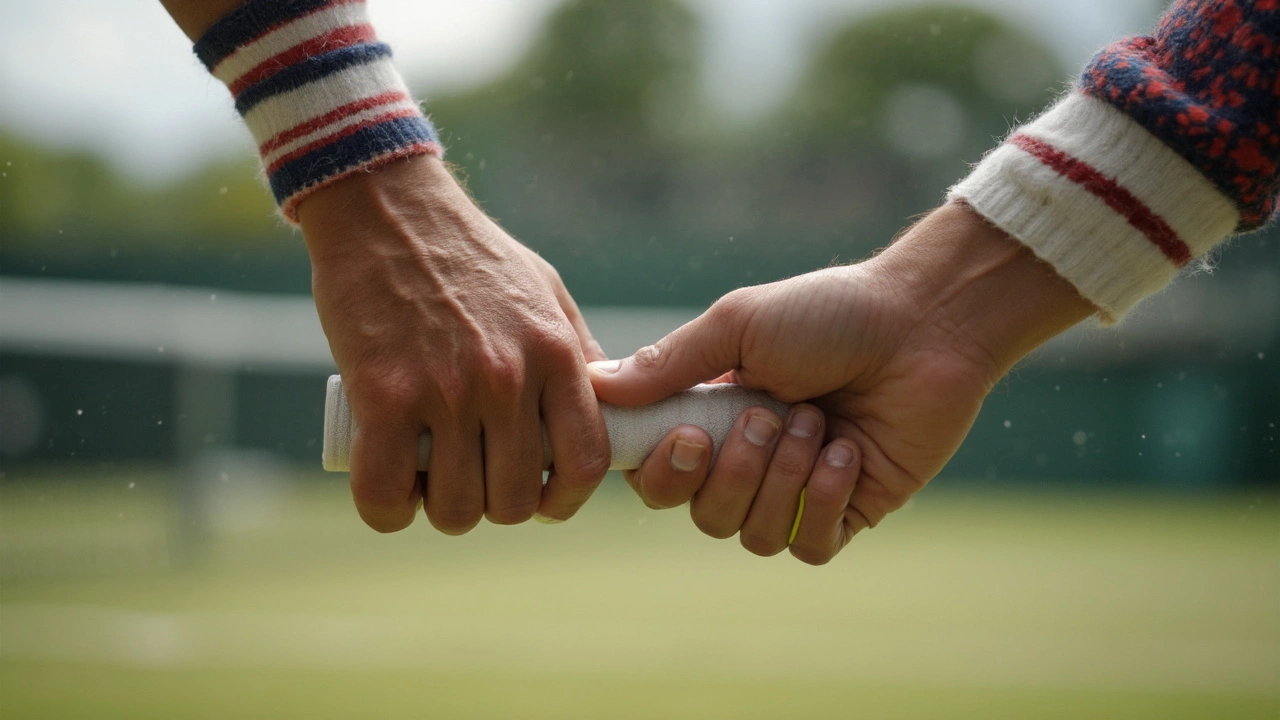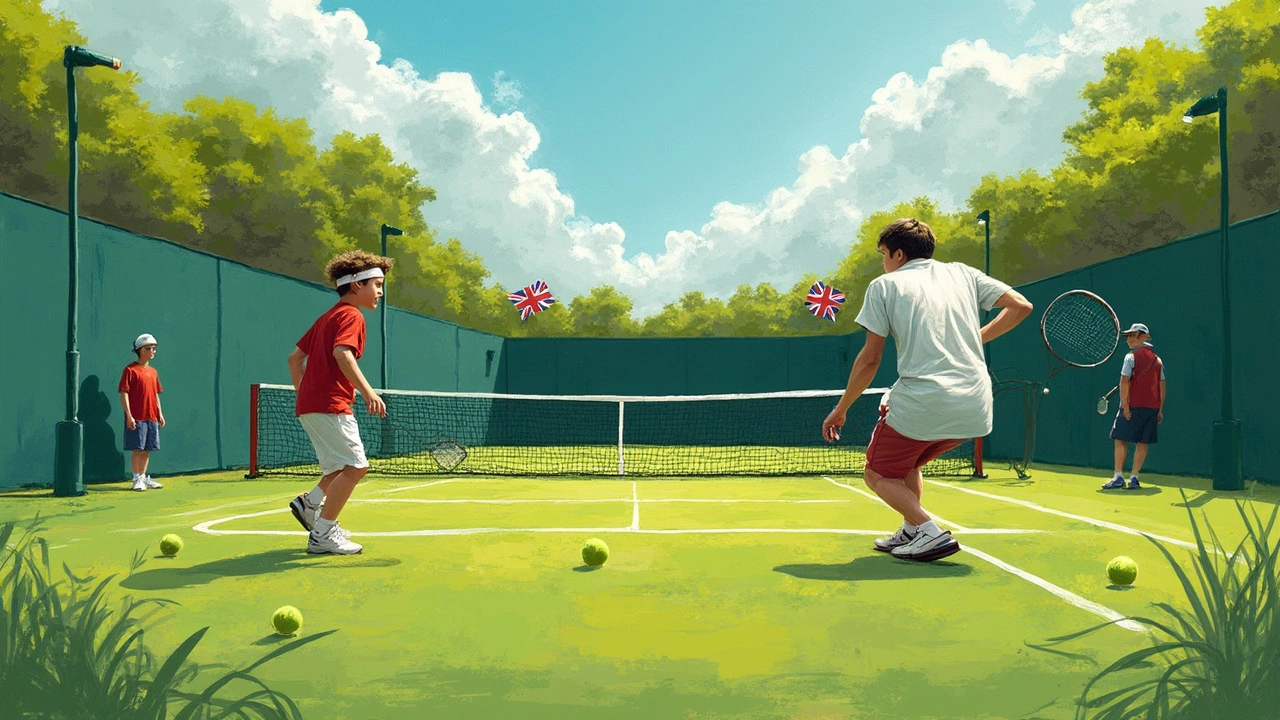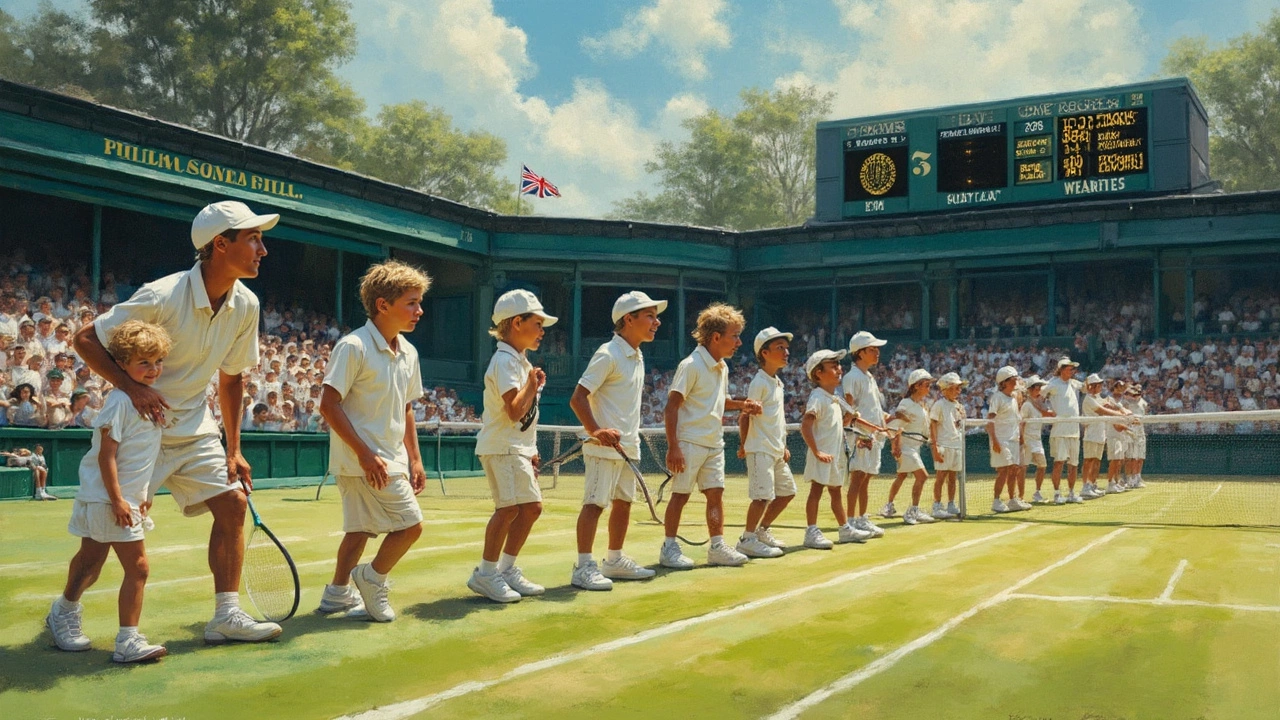If you think tennis is just a young person’s game, you might be in for a surprise. People often ask if there’s a real age cut-off for playing in tournaments. Here’s the bottom line: most pro tours and tournaments don’t force players into early retirement just because they blow out birthday candles—there’s no strict upper age limit for adults.
For beginners or parents with young hopefuls, the story is different for junior tennis. There you’ll hit age limits on both ends, making sure kids play with kids. But once you break into the adult circuit, it’s all about skill, ranking, and how much your body can handle—age won’t officially stop you from signing up for a match.
- Tennis Tournament Age Rules Explained
- Age Restrictions in Junior Tennis
- What About the Pros? Age on the Main Tours
- Youngest and Oldest Players Who Made History
- Tips for Competing at Any Age
Tennis Tournament Age Rules Explained
When it comes to tennis age limit or rules about how old you have to be—or can be—to play, things aren’t as strict as you might think. For most pro events, there’s actually no official upper age bar. You can play as long as you’re healthy, competitive, and can get into the draw. That’s why you see players in their late 30s and even 40s grinding it out on the court. Take Ivo Karlovic, for example, who played ATP matches well into his 40s. Venus Williams was still playing Grand Slams at 43. So there’s really no rule that says you must retire at a certain age.
Where age does come into play is at the bottom end—the minimum age to compete. On the WTA tour, women must be 14 to enter their first pro-level event, but there are restrictions up to age 18 on how many tournaments they can play each year. The ATP lets guys play as young as 14 in a few smaller events, but the real action starts at 16 for the bulk of pro tournaments.
For non-pro or amateur tournaments, it depends on the level. USTA events have separate categories: juniors, adults, and seniors. Seniors, in fact, can start competing in age-based categories from as young as 35 and keep going in five-year increments (like 40+, 45+, 50+, and so on). You’ll find competitors in their 80s still battling it out in senior tournaments.
Here’s a quick breakdown of prominent age rules:
- Pro tennis tournaments: No upper age limit.
- WTA tournaments: Minimum age 14, limited entries until 18.
- ATP tournaments: Practically starts at 16, with rare cases for 14- and 15-year-olds.
- Juniors: Typically ages 12-18, but exact ages vary by event.
- Seniors: Age categories usually start at 35+, with plenty of global senior events.
If you’re looking for a table to keep it tidy, here’s how it shakes out:
| Tour Level | Minimum Age | Upper Age Limit |
|---|---|---|
| ATP Tour | 14-16 (usually 16) | None |
| WTA Tour | 14 | None |
| Juniors | Under 12/14/16/18 (varies) | 18 |
| Seniors | 35 | None |
So the main takeaway is this: age rules in tennis aim to protect young players and give adults a fair shot to play as long as they can. If you’re dreaming of competing, don’t stress about the candle count on your birthday cake—worry about your racket skills and fitness instead!
Age Restrictions in Junior Tennis
Junior tennis is all about keeping the competition fair and safe for young athletes. The International Tennis Federation (ITF), which runs most of the world’s junior tennis tournaments, has clear age rules. Players in ITF junior events must be at least 13 years old on the day the tournament starts, and you “age out” after December 31 of the year you turn 18. So if you turn 18 during the season, you’re still good to finish out the year, but you’ll have to move up after that.
Other organizations, like USTA in the United States or LTA in the UK, run events split into age groups: under-10, under-12, under-14, under-16, and under-18. This helps kids compete against others at similar development stages. Here’s a look at some standard age group categories:
- U10: kids must not turn 11 before the cut-off date
- U12: must stay under 13
- U14: must stay under 15
- U16: must stay under 17
- U18: must stay under 19
You’ll often see age cut-off dates set as either January 1 or September 1, depending on the country and circuit. So check the fine print on each tournament—don’t get caught off guard by a rule buried in the entry form.
Some stats put it in perspective. According to 2023 ITF records, over 6,500 juniors worldwide competed in under-18 events, with top players turning pro before they even left the junior age group. Emma Raducanu, for example, won a junior Grand Slam at 17 and jumped right to the pro tour.
"The ITF Junior Circuit is the perfect place to develop your game, confidence and tennis IQ before making the leap to pro tennis. Age group rules help build a level playing field." – ITF spokesperson, Junior Tennis Resource, 2023
Bottom line: If you’re a parent or coach, keep tabs on age eligibility every season. Missing a cut-off means missing a whole year of growth and competition.

What About the Pros? Age on the Main Tours
When it comes to tennis tournaments at the pro level, age is more of a number than a rule. The ATP and WTA tours—those are the biggest leagues for men and women—don’t set a maximum age cap. So, as long as a player's health holds up and they can rack up points, they can keep showing up to compete.
Plenty of players keep swinging well into their late thirties and even forties. Roger Federer played his last Wimbledon at 39. Serena Williams pushed matches deep into her 40s. Ivo Karlovic, known for his big serve, was still holding his own in the ATP matches at 42. Venus Williams has played Grand Slam matches as recently as 44. No one sends these legends packing just because of their birth year.
Unlike some sports where retirement is almost mandatory by your mid-thirties, pro tennis is more flexible. Sure, the physical grind gets tougher, but there’s no written rule kicking someone off tour after a certain age. Some tour events might lean a little younger just due to the level of physical demand, but technically, if your ranking qualifies you, you’re in.
For younger players, there are a few guidelines, especially for those under 18. The WTA, for example, limits how many tournaments girls under 18 can enter, to avoid burning them out. But for older pros, it’s up to their body, motivation, and ability to keep up with the tour schedule.
Here’s a quick look at the oldest active players in recent history:
| Player | Tour | Oldest Age Played |
|---|---|---|
| Ivo Karlovic | ATP | 42 |
| Venus Williams | WTA | 44 |
| Kimiko Date-Krumm | WTA | 46 |
| Roger Federer | ATP | 41 |
The takeaway? If you keep your body in shape and your ranking up, you can stick around the pro tennis age scene far longer than most people expect.
Youngest and Oldest Players Who Made History
Tennis history is packed with stories of players who broke the mold when it comes to age, both young and old. Let’s get into some jaw-dropping facts about tennis age limit records and legendary moments.
On the young side, you can’t skip over Martina Hingis. She set the tennis world on fire by winning the 1997 Australian Open singles title at just 16 years and 3 months. That record still stands in the Open era. Even younger, Michael Chang became the youngest ever men’s Grand Slam winner at 17 years and 3 months after claiming the French Open in 1989. When you see kids racking up junior trophies, just know some shoot straight to the big leagues before they’ve even graduated high school.
Now for the ‘silver foxes’ of the tennis world. If you think there’s an unspoken age restriction tennis, you’ll have to get past legends like Ken Rosewall. He was a finalist at Wimbledon at age 39, and he won the Australian Open at 37, setting a standard for longevity. In recent times, Serena Williams won her last Grand Slam—her 23rd—at age 35, and Roger Federer snatched his last at 36. And just in 2022, Venus Williams played her 90th Grand Slam at age 42, showing no hurry to say goodbye to the game.
Check out these eye-opening stats on the youngest and oldest pro tennis age Grand Slam winners:
| Player | Event | Age |
|---|---|---|
| Martina Hingis | Australian Open (1997) | 16y 3m |
| Michael Chang | French Open (1989) | 17y 3m |
| Ken Rosewall | Australian Open (1972) | 37y 2m |
| Serena Williams | Australian Open (2017) | 35y 4m |
| Roger Federer | Australian Open (2018) | 36y 6m |
What’s the takeaway? Tennis tournaments care about your racket skills way more than your birthdate. If you can run for the ball and hit a solid forehand, no bracket is going to stop you just because of age. The record books are proof.

Tips for Competing at Any Age
Age can’t keep you off the court, but knowing how to keep your body and mind sharp sure helps if you want to outlast the competition. The big names in tennis tournaments—from Serena Williams to Roger Federer—have all talked about adapting routines as they got older. If you want to stay in the game, here’s what actually moves the needle.
- Build a Smart Training Plan: Sharpen your skills, but also listen to your body. Older players do well when they train with purpose instead of just grinding out hours. Mix up your drills, throw in rest days, and avoid overuse injuries. Even Rafael Nadal cut back on match loads to extend his career!
- Stay on Top of Recovery: Don’t believe the myth that only young players bounce back fast. Data from the ATP shows recovery routines extend careers. Try active recovery like light cycling, stretching, massage, or foam rolling after tough matches. Novak Djokovic is obsessed with sleep and recovery, and it shows.
- Focus on Mobility and Flexibility: Age hits joints first. Make stretching and mobility workouts a daily habit. Yoga or simple dynamic stretching before matches can keep you quick on your feet.
- Upgrade Your Gear: The right racquet can do wonders for joint protection. Lighter frames and dampeners help with elbow and shoulder pain, which is common if you’re playing in loads of tennis tournaments.
- Keep Competing for Fun and Challenge: Tournaments in senior or age-group categories are booming. There’s a chance to play hard, travel, and even make a name for yourself on the ITF Seniors Circuit—some folks compete at 80+ years old!
Here’s a quick look at the oldest Grand Slam match winners in the Open Era:
| Player | Age | Tournament | Year |
|---|---|---|---|
| Ken Rosewall | 37 | Australian Open | 1972 |
| Serena Williams | 39 | Australian Open | 2021 |
| Roger Federer | 36 | Australian Open | 2018 |
Last tip? Don’t wait to switch things up. If you feel your game stalling at any age, try a new coach or training style. Fresh eyes can catch habits that slow you down. In the end, your mindset beats your birthdate every single time.
